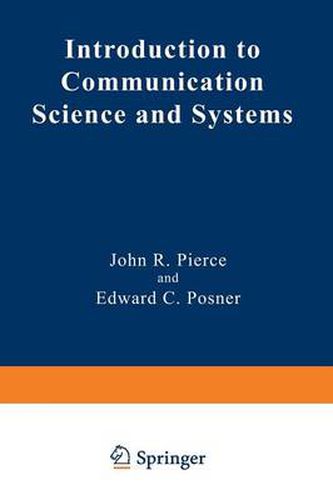Readings Newsletter
Become a Readings Member to make your shopping experience even easier.
Sign in or sign up for free!
You’re not far away from qualifying for FREE standard shipping within Australia
You’ve qualified for FREE standard shipping within Australia
The cart is loading…






This title is printed to order. This book may have been self-published. If so, we cannot guarantee the quality of the content. In the main most books will have gone through the editing process however some may not. We therefore suggest that you be aware of this before ordering this book. If in doubt check either the author or publisher’s details as we are unable to accept any returns unless they are faulty. Please contact us if you have any questions.
There are many valuable and useful books on electrical communication (References 1-5 are some examples), but they have certain disadvantages for the beginner. The more advanced books present some things in a basic way, but they are very narrow for an introduction to communica tion. The introductory books are broader but still narrow by our stan dards. Further, they often pick things out of thin air rather than derive them. This book is aimed at giving the beginner a basic understanding of a wide range of topics which are essential in communication systems. These include antennas and transmission, thermal noise and its consequences, Fourier transforms, modulation and noise, sampling and pulse code modulation, autocorrelation and power spectrum, optimum filtering, gauss ian noise and errors in digital transmission, data transmission, limits on data rate including information theory and quantum limits, and source encoding. We have not included communications traffic, switching, and multiplexing, nor protocols for digital and computer communications. For these, Reference 6 is excellent. In general, our book does not discuss the circuits used for communication or the physics of radio propagation. We assume that these will be taught in specialized courses, but such courses are not prerequisites for this one. Chapter 1 introduces the transmission formula or antenna equation and antenna directivity. Only a very basic sophomore physics knowledge of electromagnetic theory is assumed. The radar equation is also treated.
$9.00 standard shipping within Australia
FREE standard shipping within Australia for orders over $100.00
Express & International shipping calculated at checkout
This title is printed to order. This book may have been self-published. If so, we cannot guarantee the quality of the content. In the main most books will have gone through the editing process however some may not. We therefore suggest that you be aware of this before ordering this book. If in doubt check either the author or publisher’s details as we are unable to accept any returns unless they are faulty. Please contact us if you have any questions.
There are many valuable and useful books on electrical communication (References 1-5 are some examples), but they have certain disadvantages for the beginner. The more advanced books present some things in a basic way, but they are very narrow for an introduction to communica tion. The introductory books are broader but still narrow by our stan dards. Further, they often pick things out of thin air rather than derive them. This book is aimed at giving the beginner a basic understanding of a wide range of topics which are essential in communication systems. These include antennas and transmission, thermal noise and its consequences, Fourier transforms, modulation and noise, sampling and pulse code modulation, autocorrelation and power spectrum, optimum filtering, gauss ian noise and errors in digital transmission, data transmission, limits on data rate including information theory and quantum limits, and source encoding. We have not included communications traffic, switching, and multiplexing, nor protocols for digital and computer communications. For these, Reference 6 is excellent. In general, our book does not discuss the circuits used for communication or the physics of radio propagation. We assume that these will be taught in specialized courses, but such courses are not prerequisites for this one. Chapter 1 introduces the transmission formula or antenna equation and antenna directivity. Only a very basic sophomore physics knowledge of electromagnetic theory is assumed. The radar equation is also treated.